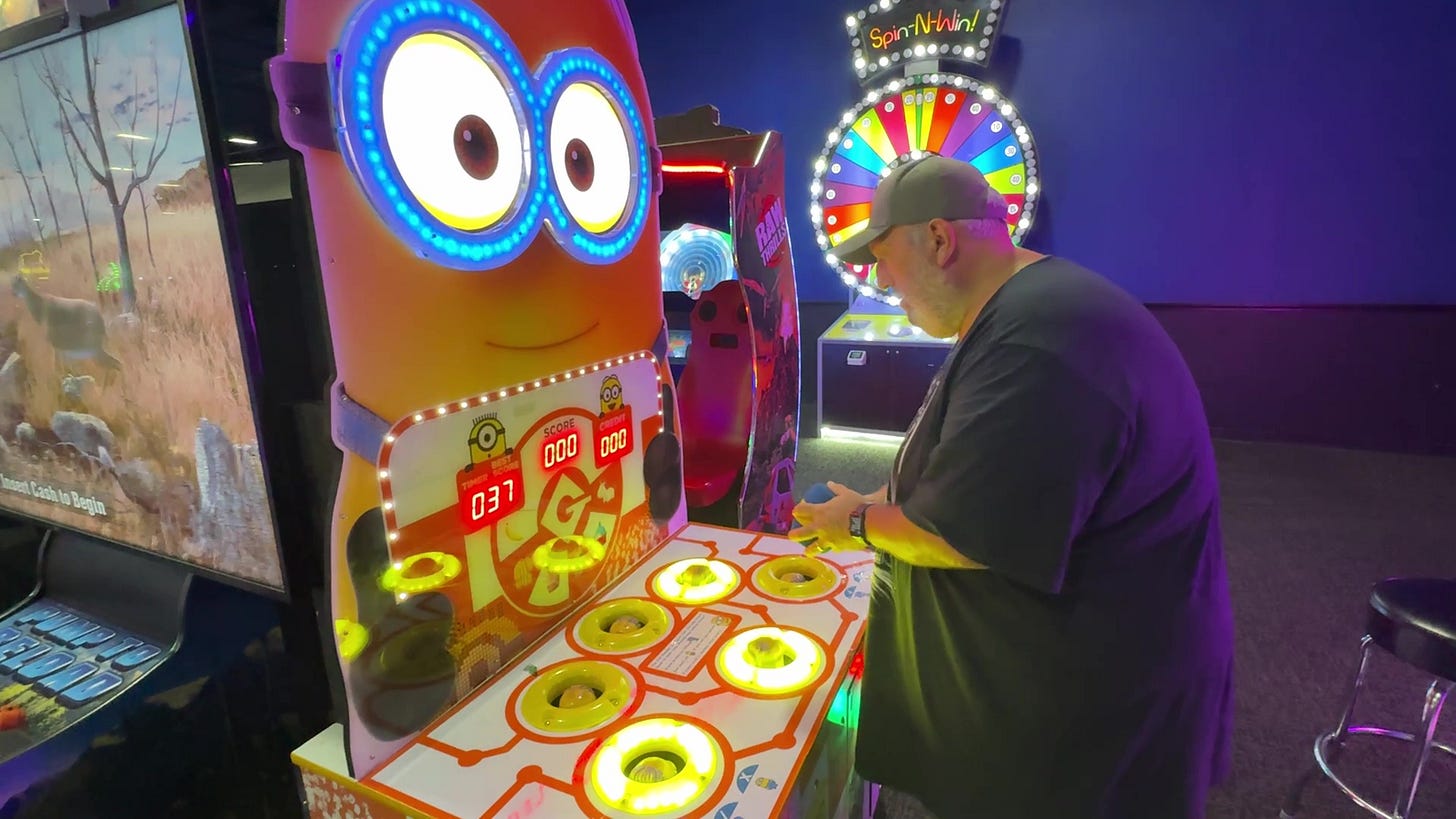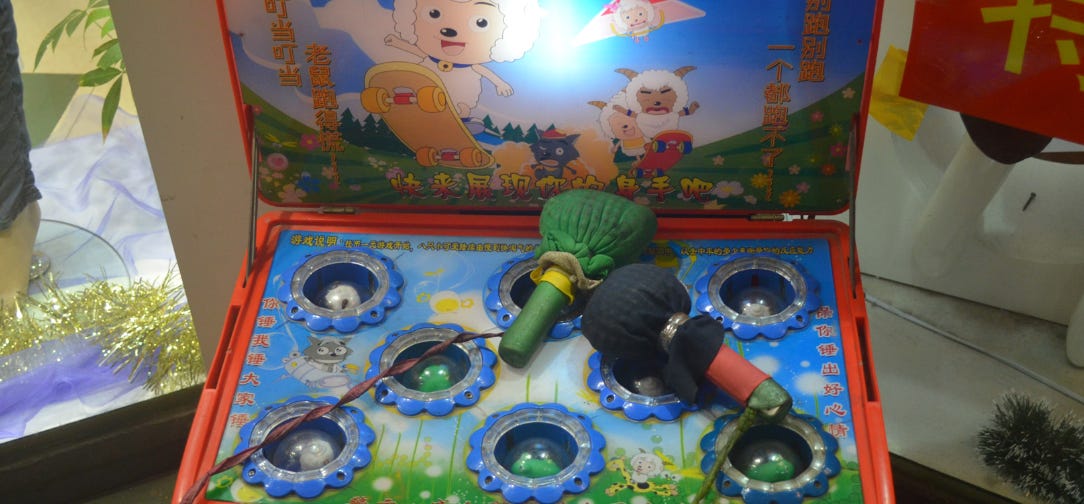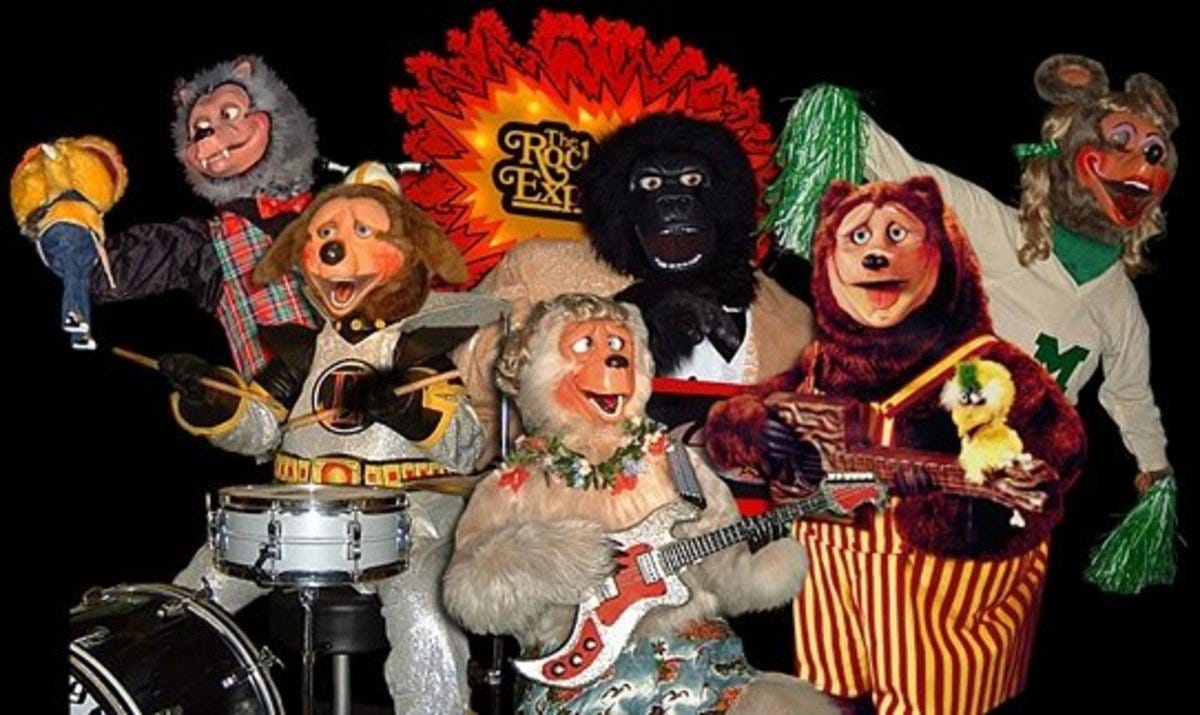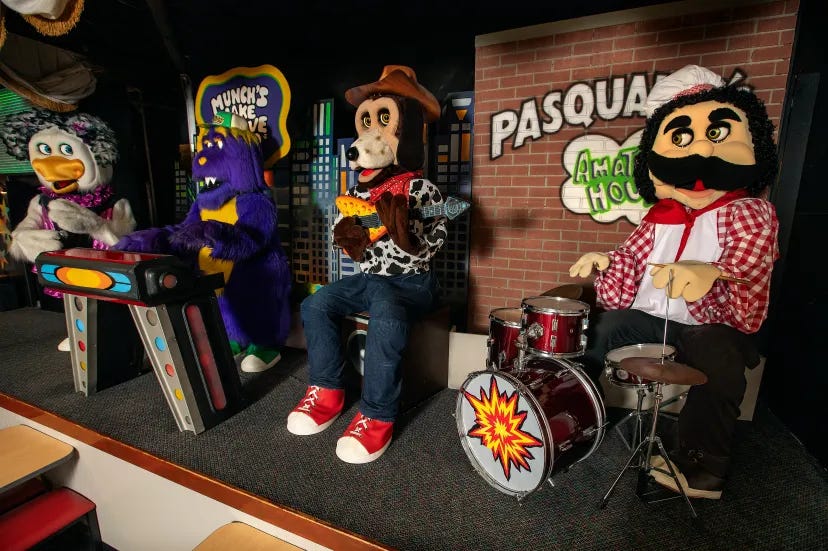The Dark History of Whac-a-Mole
Whac-a-Mole, Showbiz Pizza, the Rock-Afire Explosion, and a Cheezy Rat.
Undoubtably in your life time you have seen and probably played Whac-a-Mole. As a guy who used to collect arcade cabinets I cringe every time I visit an arcade and see kids beating on arcade machines and especially pinball tables, but Whac-a-Mole was designed to be hit. Players use a mallet to smash the heads of “moles” as they pop up from a series of holes. The more moles you whack in s set amount of time the higher your score, which typically translates to tickets that can be redeemed for a trinket.
I recently visited Incredible Pizza and saw an iteration of Whac-a-Mole where you smack Minions from Despicable Me. The history of Whac-a-Mole is one of my favorite and somewhat depressing arcade-related stories. It is the definition of the story “nice guys finish last,” although nice guys can also dust themselves off and try again, which is what happened in this case.
The roots of Whac-a-Mole can be traced back to a single event: the International Association of Amusement Parks and Attractions (IAAPA) of 1976. It was at that show that a Japanese company named TOGO displayed the first Whac-a-Mole-style game… except it wasn’t called Whac-a-Mole back then — it was called “Mogura Taiji”, which doesn’t exactly roll off the tongue.
Now as the story goes, two men at the show (Gerald Denton and Ronny Anderson) saw that original Japanese machine and quickly tried to build their own, which didn’t work very well and sometimes didn’t work at all. Denton reached out to another man, Aaron Fechter, and tasked him with improving the game’s mechanics and building a prototype, which he did. Fechter designed an air-based system to shoot the moles up from their holes, built a working protype, and officially dubbed the machine “Whac-a-Mole.”
Here’s where things get dark. Denton, now in possession of the machine, showed it to a man named Bib Cassata, the owner of an arcade named Bob’s Space Racers. Bob saw the potential of the game and purchased it from Denton. And, since no one along the way had bothered to do so, Bob trademarked the name Whac-a-Mole.
Bob Cassata went on to make millions of dollars licensing the name and rights to build similar machines. You’ll notice Aaron Fechter’s name has dropped out of the story. Fechter was cut out of the deal and got nothing.
There is a silver lining to this story. Using a similar version of the air-powered solenoids he had used in his Whac-a-Mole machine, he began putting together large air-powered animatronics. Those animatronic figures would ultimately come together to form one of the greatest bands of all time… Showbiz Pizza’s house band, the Rock-Afire Explosion.
Fechter learned a valuable lesson about trademarks and was quick to trademark his new band. When a deal was reached to install Rock-Afire Explosion bands in Showbiz Pizza locations, Fechter retained the rights to the band and a tight grip on their development. He developed the software used to program the band’s performances, and believe it or not, Fechter also provided the voices for Billy Bob Brockali, Looney Bird, Rolfe DeWolfe, Earl Schmerle, and for a short time, Mitzi Mozzarella and Beach Bear. According to Wikipedia he also provided the voice of Fatz Geronimo from 2006-2020. Having been screwed out of millions in the Whac-a-Mole deal, Fechter was not about to let that happen again.
There’s a second twist to this story. Because Fechter retained the copyright and trademark to the Rock-Afire Explosion, Showbiz Pizza did not own the rights to the band, their likeness, or their music. Every single item sold featuring a picture of the band was putting money in Fechter’s pockets. Showbiz Pizza put pressure on Fechter to sell them the rights to the band, but he refused.
So, like any good business would, Showbiz Pizza bought out Chuck E. Cheese. Many people assume Chuck E. Cheese put Showbiz out of business, but in fact it was the opposite. Why are there still Chuck E. Cheese restaurants and no Showniz Pizza places? Because after purchasing their competitor, Showbiz began converting all Showbiz Pizza places into Chuck E. Cheese restaurants… because not only had the purchased the name, but also the rights to all the characters.
This left Aaron Fechter in the dust a second time.
Aaron Fechter is still around and lives in Florida. He still owns the trademark and copyright to the Rock-Afire Explosion and owns a warehouse where he works on new inventions. He’s a little kooky and sometimes a little out there, but I think most inventors and visionaries are.
Now one thing about events that happened 50 years ago is that different people remember things differently. The history of Whac-a-Mole is mostly from Aaron Fechter’s point of view because he’s the one that tells it publicly the most, and over the years people have pointed out that the story has changed slightly, and that none of the other people involved all remember the events happening the same way. The one thing they all agree on is that Fechter built and named the original Whac-a-Mole machine, and didn’t make a nickel from its sale.
Despite losing the Showbiz Pizza deal, the Rock-Afire Explosion lives on. Many complete bands have been sold and resold. Some are in the hands of private collectors (check out the Rock-Afire Explosion documentary!) while others have been restored and are being reintroduced to a few restaurants around the country. I’ve got a feeling we haven’t seen the last of the band or Aaron Fechter. Every time the band performs, it’s a good, good night.







Fascinating (and relatively modern) invention history! Crazy to think that the same thorny inventor/trademark/company interactions share similarities to some of the dealings back from the 1890s.